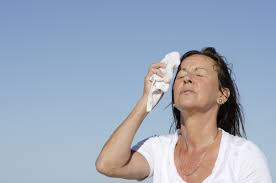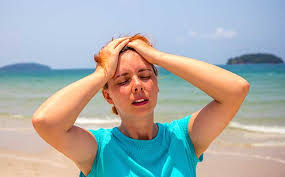
Heat Exhaustion and Heatstroke in Spain
Spain enjoys one of the most pleasurable climates in Europe with an average of up 2905 hours of sunshine each year in places like Costa del Sol. But like many of the good things in life it comes with a cost and that includes dehydration, sunburn, skin cancer, heat exhaustion and heatstroke. Heat stroke is a very serious side-effect of too much sun and in Spain, 18 people died of it last year. The very young and the elderly are particularly vulnerable.

Heat exhaustion is not a serious problem if acted upon in timely manner. It is essential to bring the person’s body temperature down as quickly as possible.
The signs that someone is suffering from heat exhaustion include:
- Headache
- Dizziness and confusion
- Loss of appetite and feeling sick
- Excessive sweating and pale, clammy skin
- Cramps in the arms, legs and stomach
- Accelerated pulse or breathing
- Corporal temperature above 38C
- Being very thirsty
If you see these symptoms there are some things you can do
- Move them to the shade or a cool place that has air conditioning
- Lie them on their back and slightly raise their feet
- Get them to drink plenty of water. Sports drinks are OK, but alcohol is no good as it will dehydrate them even more.
- Cool their skin, especially on the wrists where the main arteries are near the surface, with sponges or damp towels
If after 30 minutes the person is still unresponsive, this may be a case of heatstroke and you should look out for the following symptoms.
- They feel hot and dry to the touch
- Even though they are hot, they are not sweating
- Their temperature has risen to above 40C
- Rapidness or shortness of breath
- They start convulsing
- They lose consciousness
You should call an ambulance and put them in the recovering position until it arrives

Preventing heat exhaustion and heatstroke is fairly easy if you follow these simple rules
- Stay out of direct sunlight during the hottest part of the day, usually between 2pm and 6pm
- Drink plenty of fluids, the recommended amount is between 2- 2.5 litres per day
- Take a cool shower or bath during the day
- Wear light-coloured loose-fitting clothing
- Wear a hat
- Sprinkle water on skin or clothes
- Avoid extreme sport
- Avoid excessive alcohol
The most vulnerable to heat exhaustion and heatstroke are the elderly and young children, so it is especially important to keep an eye on them.
Leave a reply





Leave a reply